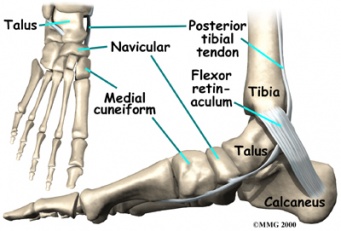A nutcracker fracture of the cuboid refers to a cuboid bone fracture with associated navicular avulsion fracture due to compression between the bases of 4 th and 5 th metatarsals and calcaneus bone. John b wells caravan to midnight youtube. The injury usually occurs secondary to the traumatic abduction of the forefoot. This results in loss of the normal lateral column support and excess valgus force upon the medial column that commonly causes rupture of tibialis posterior tendon or avulsion fracture of its attachment onto medial aspect of the tarsal navicular bone.

The most common symptom of cuboid syndrome is pain on the lateral side of your foot where your smallest toe is. Cuboid syndrome is thought to be caused when your cuboid bone everts (moves outward) from your foot while your calcaneus, or heel bone, inverts (moves inward) from your foot.
Treatment for a cuboid stress fracture typically involves an initial period of rest from weight bearing activity. This may involve a period of non-weight bearing immobilization in a plaster cast, the use of crutches or a protective boot for a number of weeks.
This can dislocate one or both bones or tear nearby ligaments. Or injuries to your ankle are among the most frequent causes of this.Cuboid syndrome can result from foot injuries like twisting your ankle by falling, misstepping, or doing other activities that put intense strain on your ankle bones and ligaments. Cuboid syndrome can also result from overuse or repetitive strain to your foot. This is common if you play sports or do other activities that involve a lot of sudden jumping, running, or moving from side to side.Excessive foot pronation, often called flat feet, can also cause cuboid syndrome. Use the to help treat pain:.
Rest your foot. Ice your foot with cold packs for 20 minutes at a time. Compress your foot with an elastic bandage. Elevate your foot above your heart to reduce swelling.Manipulation treatment is often used to treat cuboid syndrome, including:Cuboid whip.
Your doctor will ask you to lie flat on your stomach. They’ll grip the front, or dorsum, of your foot and put their thumbs on the bottom of your foot near your heel. They’ll flex your knee slightly and move your leg upward toward you. Pain associated with cuboid syndrome often goes away a few days after a minor foot injury. Full recovery from cuboid syndrome can take four to eight weeks if it’s caused by an ankle sprain or other major injury. To ensure a quick recovery:.
See a physical therapist if your doctor recommends it. Rest your foot for several hours after a strenuous workout or physical activity. Cross-train, or switch up your workout routine, to rest your feet. Stretch your feet and legs for at least 10 minutes before a workout to avoid sprains or injuries to your foot and leg muscles. Use a splint or cast if your doctor diagnoses you with a serious sprain.
